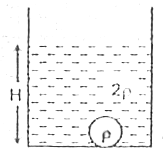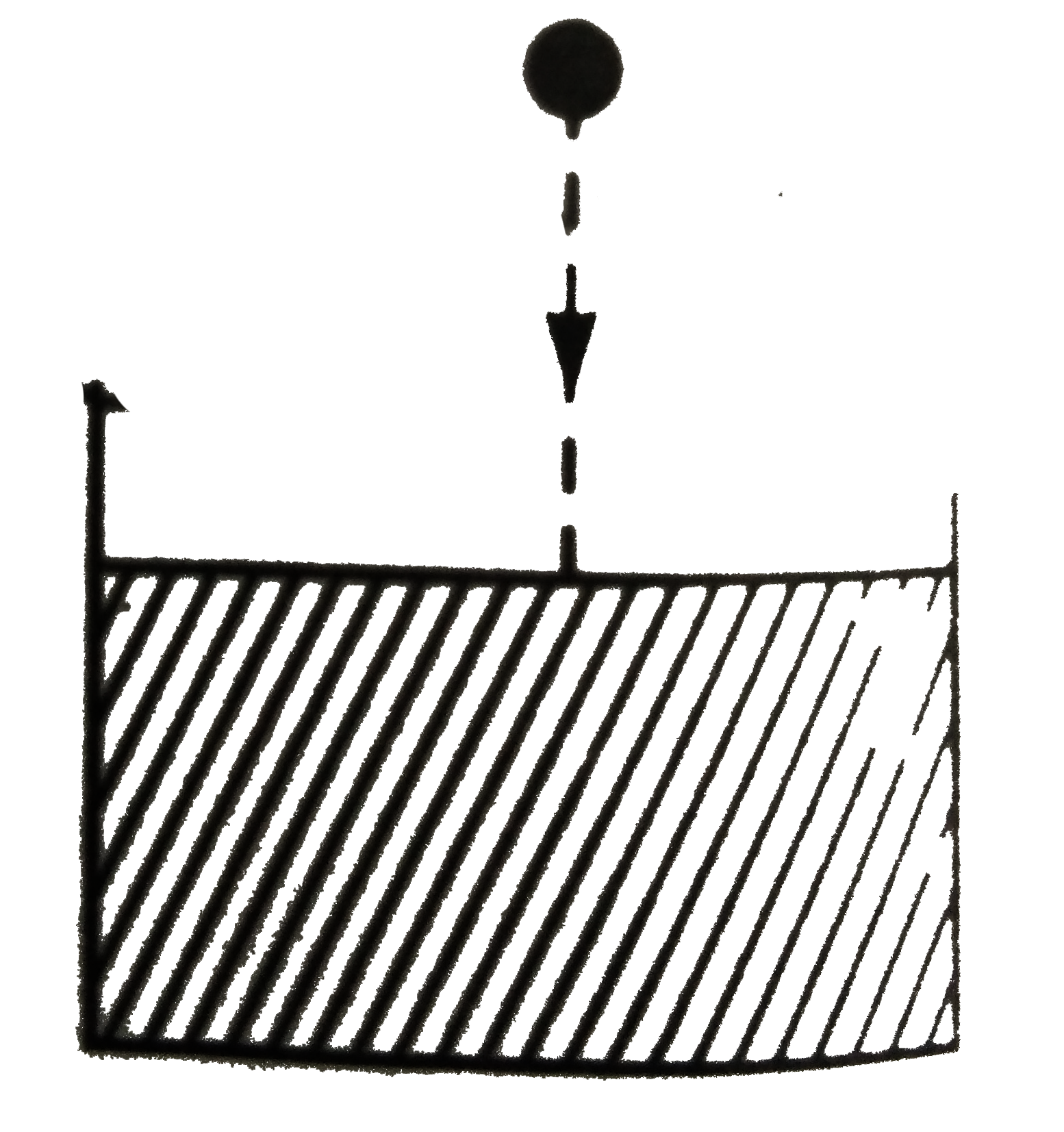A small ball of density is placed from the bottom of a tank in which a non viscous liquid of density is filled . Find the time taken by the ball to reach the surface of liquid and maximum height reached above the bottom of container . (Size of the ball and any type of drag force acting on the ball are negligible )

Acceleration of ball = where & W are force of buoyancy & weight of the body respectively .
Now
Velocity at surface
Now maximum height above bottom
Topper's Solved these Questions
- BOOK - FIITJEECHAPTER - FLUID MECHANICS EXERCISE - ASSIGHNMENT PROBLEMS (SUBJECTIVE ) SHORT ANSWER TYPE QUESTIONS (LEVEL -I)4videos
FLUID MECHANICS
- BOOK - FIITJEECHAPTER - FLUID MECHANICS EXERCISE - ASSIGHNMENT PROBLEMS (SUBJECTIVE ) FILL IN THE BLANKS (LEVEL -I)5videos
FLUID MECHANICS
- BOOK - FIITJEECHAPTER - FLUID MECHANICS EXERCISE - MATRIX MATCH TYPES6videos
FLUID MECHANICS
- BOOK - FIITJEECHAPTER - ELECTROSTATICSEXERCISE - Example14videos
ELECTROSTATICS
- BOOK - FIITJEECHAPTER - GENERAL PHYSICSEXERCISE - MATRIX MATCH TYPE3videos
GENERAL PHYSICS
Similar Questions
A small ball of mass m and density ρ is dropped in a viscous liquid of density σ. Ather some time the ball falls with a constant velocity. Calculate the viscous force acting on the ball.
View SolutionA wooden ball of density σ is released from the bottom of a tank which is filled with a liquid of density ρ(ρ>σ)up to a height h1. The ball rises in the liquid, emerges from its surface and attains a height h2 in air.If viscous effects are neglected,the ratio h2h1 is
View Solution
Knowledge Check
- Question 1 - Select One or More
A ball of density ρ is dropped from a height on the suraca of a non-visous liquid of dinsity 2ρ. Choose the correct options.
 AMotion of ball is periodic but not simple harmonicBAcceleration of ball in air and in liquid are equalCMagnitude of upthrust in the liquid is two times the weight of ballDNet force on ball in air and in liquid are equal and opposite,
AMotion of ball is periodic but not simple harmonicBAcceleration of ball in air and in liquid are equalCMagnitude of upthrust in the liquid is two times the weight of ballDNet force on ball in air and in liquid are equal and opposite, - Question 2 - Select One
A small ball is dropped from a certain height on the surface of a non-viscous liquid of density less than the density of ball. The motion of the ball is
ASHMBperiodic but not SHMCnot periodicDSHM for half a period and non-periodic for rest half of the period - Question 3 - Select One
A ball of density ρ is released from deep inside of a liquid of density 2ρ. It will move up
Awith an increasing accelerationBwith a decreasing accelerationCwith a constant accelerationDwith zero acceleration
A rubber ball of bulk modulus B is taken to a depth h of a liquid of density ρ. Find the fractional change in the radius of the ball.
View SolutionA spherical small ball of density ρ is gently released in a liquid of density σ(ρ>σ).The initial acceleration of the free fell of the ball will be
View SolutionA spherical ball of density σ is freely falling in a viscous liquid of density p(p<σ). The initial acceleration of the ball will be
View SolutionAssertion : A ball is released from the bottom of a tank filled with a liquid. It moves upwards . In moving upwards upthrust will decrease.

Reason : Density of ball is less than the density of liquid.View SolutionA small ball of density ρ is immersed in a liquid of density σ(>ρ) to a depth h and released. The height above the surface of water up to which the ball will jump is
View Solution

